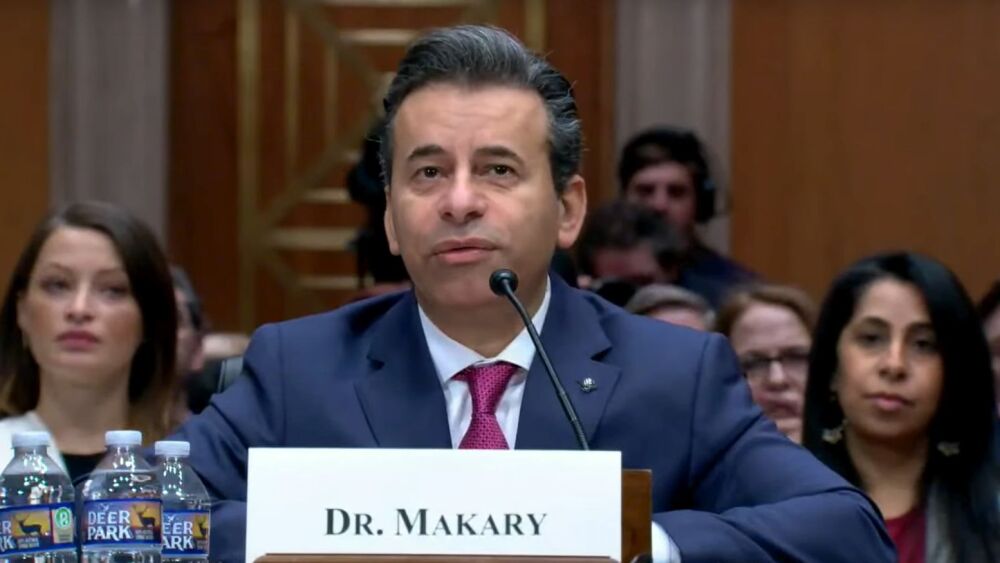In light of the Thanksgiving season, here are six things about biopharma that we are thankful for.
In the United States, the last Thursday of the month of November is designated as Thanksgiving, a feast day focused on giving thanks for all we have. In light of the Thanksgiving season, here are six things about biopharma that we are thankful for.
Innovation
The biopharma industry is built on innovation. It’s often shocking to consider just how far the biopharma industry has come in our lifetimes, although sometimes it seems we take it for granted. There are now cures for infectious diseases like Hepatitis C, effective treatments for HIV that have turned it from a nearly-always fatal disease to a chronic condition, and new gene and cell therapies are beginning to hit the market that can cure previously untreatable diseases. For example, Spark Therapeutics’ Luxturna was approved by the FDA in 2017 to treat a rare, genetic form of blindness and Novartis/AveXis’ Zolgensma was approved for spinal muscular atrophy (SMA) in May 2019.
Every day marks new discoveries in the industry and in academia that lead to new approaches to new drugs. CRISPR gene editing promises to lead to new ways to treating hundreds of genetic diseases, and immuno-therapy is leading to new treatments and sometimes cures for tough-to-treat cancers and inflammatory diseases.
Global Oversight
A year ago, in November 2018, a Chinese researcher, He Jianku, announced he had utilized CRISPR-Cas9 gene editing to alter the DNA of embryos for seven couples. He used CRISPR to disable a gene called CCR5. This gene creates a protein that allows HIV to enter a cell. All the men of the seven couples had HIV and the women did not. The gene editing’s goal wasn’t to prevent transmission of HIV, according to He, because the seven men’s HIV infections were strongly suppressed by standard HIV drugs.
Because the technique was performed on the genomes of the babies—and at this time at least one set of twins has been born—should those children have children someday, they will pass the change onto their children. This resulted in a frenzy of condemnation, not just by government regulators, but by the scientific community. The arguments are largely that it is way too early and way too dangerous to be conducting this type of research until ethical and legal guidelines have been developed and the risks understood.
This led to leading scientists and several different international bodies calling for a moratorium on heritable genome editing. The scientists included two of the inventors of CRISPR, Feng Zhang and Emmanuelle Charpentier. The moratorium doesn’t call for a permanent ban, but stated, “Rather, we call for the establishment of an international framework in which nations, while retaining the right to make their own decisions, voluntarily commit to not approve any use of clinical germline editing unless certain conditions are met.”
As grateful as we are for innovation, we are also grateful that the scientific community is aware that innovation can be misused and is taking steps to regulate it.
Vaccines
One of our oldest medical advances, vaccines, is one of the most significant. Here are 14 diseases that vaccines either control or have widely eliminated: polio, tetanus, influenza, hepatitis A and B, rubella, Hib, measles, whooping cough, pneumococcal disease, rotavirus, mumps, chickenpox and diphtheria. It has completely eradicated smallpox.
Although the tried-and-true approach to vaccines is to use a dead or attenuated virus, new approaches are expanding the types of diseases vaccines are being developed for, such as cancer and Alzheimer’s disease. According to the Pharmaceutical Research and Manufacturers of America (PhRMA), there are 264 vaccines in development to prevent and treat diseases. These include infectious diseases (137), cancer (101), allergies (10), autoimmune disease (8) and Alzheimer’s disease (4).
There are regular breakthroughs in vaccine development. In May, the FDA approved Sanofi’s Dengvaxia, a vaccine for all four serotypes of dengue. The disease, a hemorrhagic fever, is endemic in the U.S. territories of Puerto Rico and the U.S. Virgin Islands. The vaccine has a controversial history. It was pulled from the Philippine market in 2017 over safety concerns. However, it has been approved in 10 countries in Latin America and Asia where the disease is endemic. It was approved in Europe in December 2018. And in November 2019, the European Commission approved the world’s first Ebola vaccine. The vaccine is manufactured by Merck & Co. and has a trade name of Ervebo.
We are grateful that these deadly diseases are, one by one, being eliminated thanks for vaccines.
Investors
Funding is the life blood of research and development. Where would the pharmaceutical industry be without those who provide infusions of cash to support that research, as well as other business practices. Funding can come from a number of sources, such as venture capital, the stock market and, of course, the time-honored practice of mergers and acquisitions. M&A has played a big role in industry growth and it’s expected to continue to do so, particularly in the areas of immuno-oncology and gene therapy. This year alone there have been several mega-acquisitions, including Takeda’s $60 billion acquisition of Shire; Bristol-Myers Squibb’s $74 billion deal for Celgene; and AbbVie’s $63 billion plan to acquire Allergan.
There have been a number of pharma companies that have braved the stock market with initial public offerings this year, including Beam Therapeutics $100 million IPO, a $115 million IPO from SpringWorks Therapeutics, Bridge Biopharma’s $240 million IPO and more. For companies that have not gone public, there have been some big financing rounds reported lately. Recently, Cambridge, Mass.-based eGenesis topped the list with $100 million in a Series B financing round, followed closely by a spate of other companies.
Without these financial infusions of cash, many of the medications we take for granted would not be possible.
Talent
While funding may be the life blood of the industry, it’s pretty clear that the researchers and other employees are the minds behind the innovations. Weekly, BioSpace notes the comings and goings of some of the top executive talent in a Movers & Shakers column. These executive leaders have shaped the pipelines and research arms of companies and, in some cases, helped shaped the future of the industry. Names like Hal Barron, José Baselga, William A. Lee, John C. Reed, Michael Severino, George Yancopoulos, Steffan Land and more have been responsible for guiding and shaping the research conducted in the industry. In addition to those executives, there are thousands of lab-level scientists working day in and day out to understand the mechanisms of action of medications and learning how diseases respond to those therapies.
While the vast majority of the researchers in the industry do not see their names in official company statements, a select few do end up receiving special recognition, such as the elite who win Nobel Prizes in medicine. This last year, a trio of scientists won the Nobel for their work in understanding how oxygen levels affect cellular metabolism and physiological function. The work has helped in the development of new medications to fight anemia, cancer and many other diseases. In 2018, the Nobel was awarded to researchers who cracked the code that led the way to the development of checkpoint inhibitors.
For the millions upon millions of people who rely on medications to live their best lives, we are certainly thankful for the people behind the development of these life-saving and life-enhancing treatments.
Justice Served
New treatments and the stories of those patients who benefit from life-saving and altering medications should receive the bulk of the headlines for the industry. Unfortunately, scandal and crime tends to be among the most memorable and oft-reported stories. Names like Martin Shkreli and Elizabeth Holmes are far more well-known than those previously-mentioned Nobel laureates. And their names are largely known due to the levels of infamy they both rose to in the industry. Shkreli, who is currently serving seven years in federal prison for securities fraud, is mostly known for his unflinching defense of a 5,000% increase on the toxoplasmosis drug, Daraprim, his company owned, as well as the odd behavior he displayed on social media platforms. For Shkreli, his crimes are secondary to his level of infamy. Holmes will soon go to trial for her alleged role in defrauding investors in her now-shuttered company, Theranos. She went from lauded entrepreneur to the subject of podcasts, primetime investigations, books, articles and more. While both Shkreli and Holmes gave the industry something of a black eye, we can all be thankful that these bad players are few and far between and their illegal and unethical behavior is are in the minority of industry leaders. We can be thankful that these bad players ultimately must face justice.




